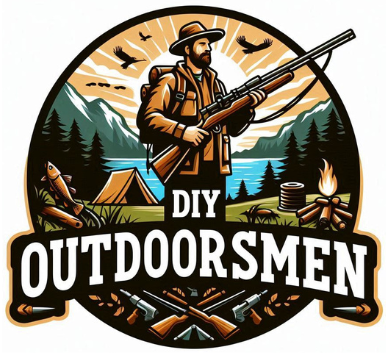Contents
- 1 Step 1: Define Your Barrel Tuning Objectives
- 2 Step 2: Gather Your Tools and Equipment
- 3 Step 3: Understand Barrel Dynamics and Characteristics
- 4 Step 4: Prioritize Safety and Preparation
- 5 Step 5: Execute the DIY Barrel Tuning Process
- 6 Step 6: Test and Evaluate Rifle Performance
- 7 Step 7: Maintain and Adjust as Necessary
- 8 Common Questions & Troubleshooting
- 9 Final Thoughts & Next Steps
Ensuring good rifle accuracy can be a rewarding project. I have found that a DIY approach to barrel tuning can step up precision for both competitive shooting and recreational use with careful adjustments and detailed research.
QUICK LOOK: Steps for Rifle Barrel Tuning
- Define specific tuning objectives based on how your rifle currently performs.
- Gather all the necessary tools and equipment, ensuring everything is in excellent working order.
- Understand and study your barrel’s behavior through detailed measurements and close inspections.
- Prioritize Safety. Doing so not only helps avoid accidents but also ensures that the equipment remains in optimal condition for precise work.
- Plan and carefully execute your tuning process while keeping safety as your top priority.
- Test your rifle thoroughly after each series of adjustments and record any changes in accuracy.
- Maintain your equipment and be ready to make further small adjustments when shooting conditions change or if you notice a decline in performance.
- Practice with different ammunition. I have found that some barrels love certain ammo and some barrels will flat not group with some ammo.
Many shooters face challenges because of inconsistent barrel performance. The process I follow offers more consistent results and a better shooting experience. This guide outlines a method I have practiced and adapted over time.
It covers defining tuning goals, gathering the correct tools, understanding barrel behavior, ensuring safe practices, executing tuning adjustments, testing performance, and making periodic refinements. In the following sections, I provide detailed insights so that you can get a feel for the entire process step by step.
Step 1: Define Your Barrel Tuning Objectives
The first part of any tuning project is to know what you are aiming to achieve. I start by checking out which specific areas of my rifle may be lacking the desired accuracy. Each firearm is unique, and your tuning goals may vary based on the type of rifle and your intended application. You might be focusing on reducing group sizes, improving wind drift stability, or stepping up overall precision for reliable shot placement.
Questions to Consider:
- What specific accuracy issues am I facing with my current barrel performance?
- Is the problem related to bullet dispersion, elevation inconsistency, or irregularities between rounds?
- Am I tuning for competitive matches, hunting excursions, or regular target practice sessions?
- What is my budget for tuning—including tool acquisition, consumables, and possible professional consultations?
Example Objectives:
- Reduce group size at extended ranges.
- Improve stability against crosswinds.
- Step up overall precision for tight shot placements.
- Identify potential barrel issues such as imperfections or stress areas.
By clearly outlining these objectives, I lay down a foundation that guides the entire tuning process. Having these goals in mind ensures that every subsequent step is focused on tangible outcomes. This planning phase is very important because it helps you determine where improvements are needed, making the rest of the project more efficient and intentional.
Step 2: Gather Your Tools and Equipment
A successful DIY barrel tuning project requires the proper equipment. I make sure to have all the necessary items before I start any physical adjustments. Investing time and a modest sum of money in the right tools can have a significant impact on the overall outcome.
Essential Tools Might Include:
- A set of precision measuring instruments such as calipers and micrometers for accurate measurements.
- Barrel tuning devices like sonic chambers or specialized chronographs to record performance metrics.
- Cleaning supplies designed to remove residues from the barrel without causing damage.
- Basic machining tools for minor adjustments. It is crucial to proceed with caution when handling these instruments.
Additional Considerations:
- A stable workbench that securely holds your rifle during adjustments.
- Proper protective gear, especially if you plan to perform any mechanical modifications.
- Reference materials or online tutorials that provide a detailed explanation of the tuning process.
Having these tools at hand not only supports a smooth project flow but also minimizes the risk of accidental damage. Detailed preparation with the right equipment makes it easier to follow the step-by-step process, ensuring safety and more effective adjustments throughout the work session.
Step 3: Understand Barrel Dynamics and Characteristics
A thorough understanding of barrel behavior is central to making effective adjustments. I have learned that when you check out a barrel’s internal characteristics, you can target specific issues that influence accuracy. Factors such as internal rifling, throat erosion, and the natural harmonics of the barrel all play important roles in how a bullet is guided and stabilized in flight.
Key Concepts Behind Barrel Behavior:
- Bore Consistency: The uniformity of the barrel’s internal diameter is crucial for ensuring that a bullet travels smoothly. Even small imperfections can cause deflections, resulting in deviations from the intended trajectory.
- Rifling Quality: Inconsistencies in the rifling can alter how the bullet rotates. This rotation is important for stability, especially at longer distances, and any variation can affect the final shot grouping.
- Heat Effects: Prolonged shooting sessions generate heat which can change the shape of the barrel over time. Recognizing these thermal changes helps plan tuning sessions to account for heat-induced distortions.
Practical Steps to Analyze Barrel Behavior:
- Perform a detailed inspection of the bore using a bore scope if it is available. This close look provides insight into any physical irregularities.
- Use a chronograph to record bullet velocity before and after tuning, which helps in measuring improvements.
- Compare shooting sessions using different ammunition loads to detect load-specific issues that might arise.
This approach means that every adjustment is based on measurable data rather than blind guesswork. Each piece of information gathered lets you make precise corrections, ensuring that every tuning step is directly linked to actual performance improvements.
Step 4: Prioritize Safety and Preparation
Safety is very important in any DIY tuning project involving firearms. I take extra care to follow all recommended safety protocols. Doing so not only helps avoid accidents but also ensures that the equipment remains in optimal condition for precise work.
Preparation and Safety Checklist:
- Always ensure that the firearm is unloaded before beginning any part of the work.
- Double-check the area to make sure that no ammunition is present or within reach.
- Work in a clean and well-lit area to minimize mistakes and oversight.
- Keep a first-aid kit and a fire extinguisher close by in case of any emergency situations.
Proper preparation minimizes the risk of mishaps during the tuning process. I take time to set up a secure work environment, including periodic breaks and a final review of safety procedures before I start any adjustments. This careful precaution gives me confidence that each step is conducted safely and correctly.
Step 5: Execute the DIY Barrel Tuning Process
This phase involves making the actual adjustments to optimize the barrel’s performance. I follow a methodical approach based on the objectives and data I gathered earlier. The process can involve minor cleaning, machining, and repeated testing procedures. Each modification is intended to step up the barrel’s overall performance incrementally.
Steps in the Tuning Process:
- Start by cleaning the barrel thoroughly. Removing dirt, powder residues, and any contaminants provides a solid baseline from which to work.
- If any minor machining is needed, adjust the barrel with extreme care. I work slowly, opting for gradual changes rather than drastic cuts, as even small refinements can lead to noticeable improvements.
- After each adjustment, use precision tools to record any changes in the barrel’s internal dimensions.
- Take the time to document every change. Keeping clear records helps when comparing results from session to session and prevents unnecessary repeat work.
Important Considerations During Tuning:
- Take regular breaks during the process to maintain accuracy and focus.
- Inspect all tools frequently to ensure they are in good condition, as worn instruments can lead to imprecise adjustments.
- During any mechanical work, use gentle pressure and prioritize precision over speed.
This phase requires both patience and precision. I methodically test each modification as it is made, ensuring that every adjustment contributes to a better overall shot performance. Detailed documentation of each step helps in reproducing successful changes and rethinking those that might need further refinement.
Step 6: Test and Evaluate Rifle Performance
Once the adjustments are complete, testing becomes an essential phase. I use a controlled environment to gather reliable feedback on the rifle’s improved accuracy. This testing phase is crucial to confirm whether the tuning adjustments have achieved the desired effect.
Testing Protocols:
- Set up a dedicated shooting range or controlled practice area that can simulate real-world conditions.
- Use a chronograph to measure bullet velocity before and after the tuning process, as changes in speed can indicate improvements.
- Assess group sizes at various distances to see if shooting consistency has improved.
- Record and compare data from before and after adjustments to identify clear improvements or the need for further modifications.
Evaluation Techniques:
- Perform several shooting sessions under similar external conditions, noting the influence of wind, temperature, and other variables.
- If the results do not meet your expectations, apply minor adjustments between tests to fine-tune accuracy further.
- Consider discussing results with experienced shooters or checking in with reputable online forums dedicated to DIY tuning for additional insights.
Consistent and repeatable tests help me see whether the efforts put into tuning translate into a noticeable step up in accuracy. Documenting every test, along with adjustments made, creates a robust record that can be very helpful in long-term improvement strategies.
Step 7: Maintain and Adjust as Necessary
The final step involves ongoing maintenance and periodic refinements. Improvements made during tuning can shift over time due to regular use or environmental factors. I keep detailed records of all changes and remain open to making further small adjustments when necessary.
Maintaining Tuning Improvements:
- Keep a log of all modifications, complete with before-and-after measurements and test data. This log helps you compare long-term performance changes.
- Perform regular cleaning and testing sessions to catch any deviations or drift in accuracy early.
- If you happen to change the type of ammunition or if signs of barrel wear become evident, be ready to revisit your tuning strategy.
Additional Tips for Long-Term Success:
- Inspect the barrel periodically for any signs of damage or unusual wear.
- If you engage in extensive shooting sessions, consider periodic professional assessments to ensure the tuning remains effective.
- Stay patient and methodical in your approach; even small, gradual adjustments can lead to noticeable long-term improvements.
This continuous cycle of maintenance and adjustment secures the benefits you gain from initial tuning efforts. Consider it a long-term project where every feedback loop helps you better understand your rifle’s behavior and refine your tuning techniques further.
Common Questions & Troubleshooting
What if I do not have enough experience?
If you are new to barrel tuning, I recommend starting with small, incremental changes. Spend plenty of time researching and checking in on each step before moving on. It might also help to seek advice from seasoned DIY enthusiasts or experts who can guide you in the right direction.
How do I know if a change is effective?
Always record detailed data on your rifle’s performance before any adjustments.
Test your rifle under the same conditions both before and after changes for a fair comparison.
Look for consistent improvements in group size and stability with each modification.
What if I encounter unexpected barrel behavior?
Stop and carefully review each previous step and measurement. Rushing can lead to further issues.
Consult trusted resources or step in and ask experts who are familiar with DIY barrel tuning.
If necessary, revert to earlier settings and re-assess your approach to pinpoint where the anomaly originates.
The troubleshooting stage is a natural part of learning how your rifle reacts to modifications. I consistently refine my process by analyzing test results and incorporating feedback from fellow shooters, which helps to steadily improve overall performance.
Final Thoughts & Next Steps
A DIY approach to barrel tuning provides a hands-on way to step up rifle accuracy. This project demands careful research, the right tools, a good understanding of barrel behavior, and rigorous testing. I have found this process both educational and very rewarding. Each adjustment not only increases the potential for more precise shooting but also builds your expertise in handling and maintaining your firearm.
Your Barrel Tuning Action Plan:
- Define specific tuning objectives based on how your rifle currently performs.
- Gather all the necessary tools and equipment, ensuring everything is in excellent working order.
- Study your barrel’s behavior through detailed measurements and close inspections.
- Plan and carefully execute your tuning process while keeping safety as your top priority.
- Test your rifle thoroughly after each series of adjustments and record any changes in accuracy.
- Maintain your equipment and be ready to make further small adjustments when shooting conditions change or if you notice a decline in performance.
Taking a methodical and disciplined approach to DIY barrel tuning can really pay off over time. I encourage you to get involved in the process carefully, learn from every adjustment, and remain patient. Through persistent effort and attention to detail, you can watch your shooting performance improve noticeably.
The effort you invest now sets the stage for a more reliable and enjoyable shooting experience in the future. I hope these steps serve as a practical roadmap as you plan, execute, and refine your tuning efforts for better rifle performance.
What measures will you take to jumpstart your DIY barrel tuning process? Each small step you take today builds toward a future of improved accuracy and more confident shooting. Take your time, review every detail, and most importantly, enjoy the adventure of refining your skills.
Check Out Our Latest Articles:
- Understanding Deer Behavior To Improve Your Hunt

- Complete Guide On Tracking Game Animals

- DIY 4-Step Guide To Field Dressing And Quartering A Deer

- Night Vision Binoculars For Nocturnal Hunting

- The Science Behind Camouflage Patterns For Deer Hunting

- Binocular Accessories For Hunters

As always, stay safe, enjoy the journey and please try to leave it cleaner than you found it. If you have any comments, questions, ideas, or suggestions please leave them in the comment section below and I’ll get back to you ASAP. You can follow us on YouTube: Man Art Creations for videos of our DIY Adventures.
P.S. – Thanks so much for checking out our blog we really appreciate it. Just so you know, we may receive a commission if you click on some of the links that appear on our site. This helps us keep our content free and up-to-date for everyone. We appreciate your support!


